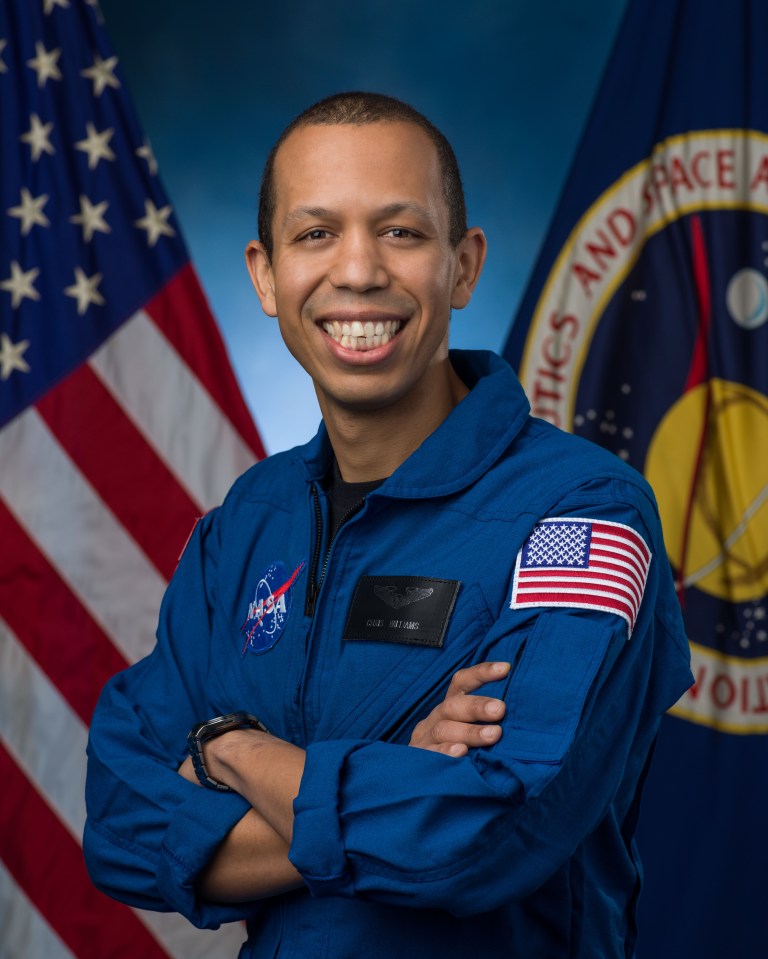
NASA Astronaut Christopher L. Williams
NASA Astronaut
Follow Christopher
Christopher L. Williams, Ph.D.
Summary
Chris Williams was selected by NASA to join the 2021 Astronaut Candidate Class. He graduated from Stanford University (Palo Alto, California), with a bachelor’s degree in physics in 2005 and earned a doctorate in physics from the Massachusetts Institute of Technology (Cambridge, Massachusetts) in 2012, where his research was in astrophysics. Williams is a board-certified medical physicist, completing his residency training at Harvard Medical School (Boston, Massachusetts), before joining the faculty as a clinical physicist and researcher.
Personal
Born in New York City, Williams considers Potomac, Maryland, to be his hometown. He is married to Aubrey Samost-Williams, originally of North Reading, Massachusetts, and they have two daughters. Williams’ parents are Roger Williams and Ginger Macomber of Potomac. He enjoys hiking, camping, cooking, and traveling. He is also a private pilot and Eagle Scout.
Education
Graduated from Montgomery Blair High School, Silver Spring, Maryland, in 2001. Earned a bachelor’s degree in physics from Stanford University in 2005 and a doctorate in physics from MIT in 2012. Completed residency training at the Harvard Medical Physics Residency Program in 2015
Experience
At the time of his selection, Williams was an assistant professor at Harvard Medical School in Boston, Massachusetts, where he worked as a medical physicist in the Radiation Oncology Department at the Brigham and Women’s Hospital, Boston, and Dana-Farber Cancer Institute. He was the lead physicist for the Institute’s MR-guided adaptive radiation therapy program. His research focused on developing new image guidance techniques for cancer treatments.
Williams’ doctoral research at MIT was in astrophysics, focusing on developing radio telescope instrumentation and data processing techniques for cosmology. He was part of the team that built the Murchison Widefield Array, a low-frequency radio telescope array in Western Australia designed to study the epoch of reionization of the early universe. During high school and college, Williams worked at the U.S. Naval Research Laboratory, Washington, D.C., studying supernovae using the Very Large Array radio telescope. He has also served as a volunteer emergency medical technician and firefighter.
NASA Experience
Williams was selected as a NASA astronaut candidate in December 2021 and reported for duty in January 2022 to complete two years of initial astronaut training.
Awards/Honors
Eagle Scout, MIT Bruno Rossi Fellowship (2006), Ford Foundation Predoctoral Fellowship (2006), American Astronomical Society Beth Brown Memorial Award (2009); Brigham Research Institute Innovator Award (2017)
Organizations
Member of the American Association of Physicists in Medicine.


























